Empowering Change: Top 50 Nonprofit Influencers in the Philadelphia Metro Area
At Nonprofits.Club, we understand the power of dedicated leaders in transforming communities and driving social impact. To compile our list of the top 50 nonprofit influencers in the Philadelphia Metro Area, we used a meticulous selection process. Our team evaluated leaders based on their organizational impact, leadership qualities, innovative approaches, and their contributions to equity and inclusion. We also considered their influence within the nonprofit sector and their ability to foster cross-sector collaborations. This comprehensive list highlights the individuals making significant strides in various fields, from education and healthcare to economic development and cultural preservation.
Pedro Ramos – Leads Philadelphia Foundation, major grantmaker

As President and CEO of the Philadelphia Foundation, Pedro Ramos leads one of the oldest and largest community foundations in the U.S. Under his leadership, the foundation has significantly increased its assets and launched major initiatives like the Lenfest Institute for Journalism and the PHL COVID-19 Fund. Ramos has strengthened the foundation’s role as a convener and catalyst for positive change in the Greater Philadelphia region. His strategic vision has expanded the foundation’s impact across education, economic development, and civic engagement. Ramos’s background in law, government, and education brings valuable cross-sector expertise to his philanthropic leadership.
Bill Golderer – United Way CEO, coordinates 100k+ volunteers

As President and CEO of United Way of Greater Philadelphia and Southern New Jersey, Bill Golderer oversees an organization that mobilizes over 100,000 donors and volunteers annually. He has refocused the United Way’s efforts on fighting intergenerational poverty through initiatives in education, financial empowerment, and career pathways. Golderer founded Broad Street Ministry, an innovative approach to serving vulnerable populations. His entrepreneurial spirit has brought new energy to the United Way, fostering cross-sector collaborations and data-driven strategies. Golderer’s leadership emphasizes both immediate impact and long-term systemic change in addressing community needs.
Sharmain Matlock Turner – Urban Affairs Coalition CEO, community leader

As President and CEO of the Urban Affairs Coalition, Sharmain Matlock-Turner leads a diverse coalition of government, business, and community organizations focused on improving life in the Philadelphia region. Under her leadership, the coalition manages over $33 million annually in programs addressing economic development, youth success, and community building. Matlock-Turner has expanded the coalition’s impact and partnerships, positioning it as a key convener on urban issues. Her advocacy work extends to numerous boards and commissions, amplifying community voices in policy discussions. Matlock-Turner’s collaborative approach has strengthened the nonprofit sector’s capacity to drive positive change in urban communities.
Carra Cote-Ackah – Senior Fellow, Center for High Impact Philanthropy

As a Senior Fellow at the Center for High Impact Philanthropy, Carra Cote-Ackah contributes valuable expertise on strategic giving and social impact. She previously led Vanguard’s global philanthropic programs, focusing on early childhood education and community development. Cote-Ackah’s work bridges academic research and practical application, helping donors and foundations optimize their giving for maximum impact. Her experience spans corporate, family, and institutional philanthropy, providing a comprehensive perspective on the sector. Cote-Ackah’s thought leadership advances evidence-based practices in philanthropy and promotes innovative approaches to addressing social challenges.
Eileen R. Heisman – National Philanthropic Trust CEO, giving expert

As President and CEO of National Philanthropic Trust, Eileen R. Heisman has led the organization to become the largest independent provider of donor-advised funds in the U.S. Under her leadership, NPT has facilitated billions in charitable giving. Heisman is a nationally recognized expert on philanthropy, frequently contributing to public discourse on charitable trends and best practices. Her work has significantly advanced the use of donor-advised funds as a flexible giving vehicle. Heisman’s teaching and advisory roles extend her influence, shaping the next generation of philanthropic leaders and promoting ethical, effective giving practices.
Sam Reiman – Richard King Mellon Foundation director

As Director of the Richard King Mellon Foundation, Sam Reiman oversees one of the largest philanthropic organizations in Pennsylvania. He has led the implementation of a strategic plan investing over $1 billion in economic development, conservation, and community initiatives. Reiman’s leadership has expanded the foundation’s impact beyond traditional grantmaking, embracing innovative financing models and cross-sector partnerships. His approach emphasizes data-driven decision-making and long-term sustainability in philanthropic investments. Reiman’s work has significantly influenced regional development strategies and conservation efforts across southwestern Pennsylvania and beyond.
Heather Templeton Dill – John Templeton Foundation president

As President of the John Templeton Foundation, Heather Templeton Dill leads an organization that supports research and dialogue on the deepest questions facing humankind. Under her leadership, the foundation has expanded its grantmaking in areas such as science, philosophy, and human sciences. Dill has maintained the foundation’s unique focus on the intersection of science and spirituality while broadening its global reach. Her work promotes interdisciplinary approaches to complex issues, fostering innovation in research and public engagement. Dill’s leadership continues the foundation’s legacy of supporting groundbreaking ideas that expand human knowledge and understanding.
Shawn McCaney – William Penn Foundation executive director

As Executive Director of the William Penn Foundation, Shawn McCaney leads one of the largest philanthropic organizations in Philadelphia. Under his leadership, the foundation has invested significantly in education, environmental protection, and arts and culture. McCaney has spearheaded initiatives that have increased quality pre-K seats, improved public school funding, and advanced land conservation efforts. His strategic vision has expanded the foundation’s impact across the region, fostering innovative approaches to urban challenges. McCaney’s background in city planning brings a unique perspective to philanthropy, emphasizing collaborative, data-driven strategies to create lasting change in the Greater Philadelphia area.
Adonis Banegas – Concilio ED, Hispanic community advocate

As Executive Director of Concilio (The Council of Spanish Speaking Organizations of Philadelphia), Adonis Banegas is a key advocate for the Hispanic community in Philadelphia. With over 20 years of experience in nonprofit management and public health, Banegas has strengthened Concilio’s role in providing vital services to Latino families. Under his leadership, the organization has expanded its programs in education, health, and social services. Banegas has been instrumental in fostering partnerships with other community organizations and government agencies, enhancing Concilio’s capacity to address the diverse needs of the Hispanic population. His work has significantly contributed to improving access to resources and opportunities for Latino residents in Philadelphia.
Najja R. Orr – Philadelphia Corporation for Aging CEO

As President and CEO of Philadelphia Corporation for Aging (PCA), Najja R. Orr leads one of the largest nonprofit organizations serving older adults in Pennsylvania. Under his leadership, PCA has significantly expanded its services, particularly during the COVID-19 pandemic, delivering millions of meals to seniors. Orr has championed innovative approaches to aging services, emphasizing community-based care and technology integration. His expertise in aging policy and administration has positioned PCA as a leader in addressing the complex needs of an aging population. Orr’s commitment to diversity and inclusion has strengthened PCA’s outreach to underserved communities, ensuring equitable access to vital services for all older Philadelphians.
Kelly Woodland – United Way equity leader, community builder
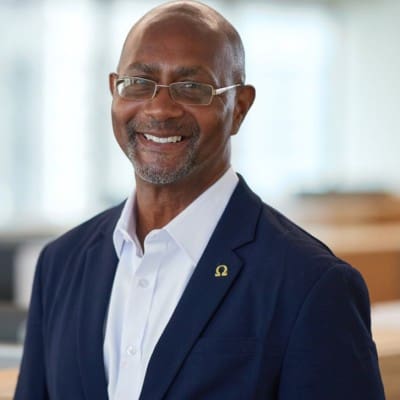
As Managing Director of Leadership Equity at United Way of Greater Philadelphia and Southern New Jersey, Kelly Woodland is a driving force for equity in the nonprofit sector. With over 35 years of experience, Woodland has been instrumental in developing strategies to advance racial equity in philanthropy. He co-founded the Philadelphia African American Leadership Forum and the Black Nonprofit Chief Executives of Philadelphia, initiatives that have significantly impacted the sustainability and effectiveness of Black-led nonprofits. Woodland’s work focuses on promoting leadership advancement, equitable grantmaking, and inclusive decision-making, contributing to a more diverse and representative nonprofit landscape in the Philadelphia region.
Lauren Gilchrist – Executive Vice President, Newmark

As Executive Vice President and Market Leader for the Greater Philadelphia Region at Newmark, Lauren Gilchrist brings valuable expertise to the nonprofit sector through her involvement in various community organizations. While her primary role is in commercial real estate, Gilchrist’s board positions with the Philadelphia Orchestra, Old City Community Fund, and NAIOP demonstrate her commitment to civic engagement. Her research background and understanding of urban economic development provide valuable insights to nonprofit organizations navigating complex urban issues. Gilchrist’s leadership in professional associations and recognition as a influential business leader position her as a bridge between the private sector and nonprofit world, fostering collaborations that benefit the Greater Philadelphia community.
Erika James – Dean, Wharton School of Business

As Dean of the Wharton School of Business, Erika James is the first woman and person of color to lead the prestigious institution. She is a leading expert on crisis leadership, workplace diversity, and management strategy. Her tenure has been marked by a commitment to diversity and inclusion, as well as fostering cross-disciplinary collaboration. James has significantly contributed to the nonprofit sector by promoting business education’s role in community transformation and supporting initiatives that drive social impact through innovative research and leadership training.
Markita Morris-Louis – Compass Working Capital CEO, finance expert

As CEO of Compass Working Capital, Markita Morris-Louis leads efforts to help low-income families build assets and achieve financial stability. With a strong background in law and financial services, she has developed strategic partnerships with housing authorities and nonprofits to expand financial capability programs. Morris-Louis’s leadership has been instrumental in advocating for anti-poverty policies and enhancing financial literacy among underserved communities. Her work has significantly contributed to the nonprofit sector by empowering families to achieve economic mobility and stability.
Fred Brown – The Forbes Funds CEO, nonprofit supporter

As President and CEO of The Forbes Funds, Fred Brown focuses on strengthening the management capacity and impact of community-based nonprofits in Pittsburgh. With over 30 years of experience, Brown has been a champion for innovation, capacity-building, and sustainable social development. His leadership has facilitated strategic partnerships and resource optimization, helping nonprofits navigate challenges and enhance their effectiveness. Brown’s contributions to the nonprofit sector include promoting systems thinking and fostering a collaborative environment for social change.
Carmen Anderson – Vice President of Equity and Learning, The Heinz Endowments

Carmen Anderson, Vice President of Equity and Learning at The Heinz Endowments, is a prominent figure in the nonprofit sector, focusing on social justice and equity. With over 16 years of experience, she leads initiatives addressing critical needs of children, youth, and families in the Pittsburgh region. Anderson spearheaded the African American Men & Boys Initiative since 2007, identifying educational, economic, and leadership opportunities for this demographic. Her work extends to strengthening families, promoting healthy child development, and advancing financial education. Anderson’s contributions to the nonprofit sector include developing strategies to make inclusion and diversity defining elements of the region, and fostering innovative programs that target systemic inequities. Her leadership has significantly shaped the Endowments’ approach to community-driven change and equitable philanthropy.
Preston Heldibridle – PA Youth Congress ED, LGBTQ youth advocate

As Executive Director of the Pennsylvania Youth Congress (PYC), Preston Heldibridle is a prominent advocate for LGBTQ youth. He has played a crucial role in defeating legislation that would have removed healthcare coverage for trans youth and has been instrumental in advancing LGBTQ-inclusive nondiscrimination protections in Pennsylvania. Heldibridle’s leadership has strengthened PYC’s advocacy efforts, coalition-building, and visibility in the state capital. His contributions to the nonprofit sector include championing the rights and well-being of LGBTQ youth and fostering a more inclusive and equitable society.
Susan Higginbotham – PA Coalition Against Domestic Violence ED

As Executive Director of the Pennsylvania Coalition Against Domestic Violence (PCADV), Susan Higginbotham leads efforts to support nearly 90,000 victims of domestic violence annually through a network of 60 member programs. With over 25 years of experience in nonprofit management, she has strengthened PCADV’s role as a leader in advocacy, education, and service provision. Higginbotham’s work includes advancing legislative measures to protect survivors and raising public awareness about domestic violence issues. Her leadership has been instrumental in enhancing the coalition’s impact and ensuring comprehensive support for victims across Pennsylvania.
Mike Smith – Goodwill of Southwestern PA CEO

As the former President and CEO of Goodwill of Southwestern Pennsylvania, Mike Smith dedicated over three decades to transforming the organization into a leading provider of job training and employment services. Under his leadership, Goodwill expanded its programs and services, significantly increasing its impact on the community. Smith’s tenure was marked by innovative initiatives that helped thousands of individuals with disabilities and other barriers to employment achieve self-sufficiency. His commitment to social enterprise and workforce development has left a lasting legacy in the nonprofit sector, improving lives and strengthening communities in Southwestern Pennsylvania.
Everett Abitbol – Partner, Yowie hotel project

As a Partner in the Yowie hotel project and Director of Hospitality & Development at Scout Ltd., Everett Abitbol has played a key role in transforming Yowie from a retail brand into a hospitality destination in Philadelphia. His work includes developing a boutique hotel that integrates design, community engagement, and local culture. Abitbol’s contributions to the nonprofit sector are reflected in his board service with The Steel Yard, an arts organization that supports industrial arts education. His innovative approach to urban development and community building has fostered economic growth and cultural enrichment in Philadelphia.
Kat Rosqueta – Center for High Impact Philanthropy director
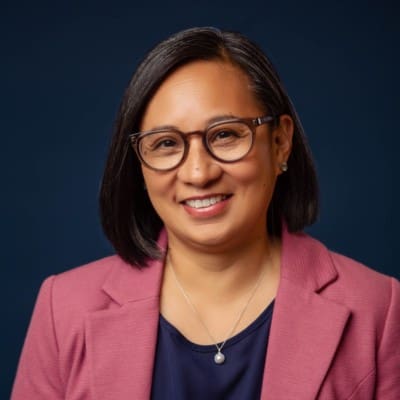
As the Founding Executive Director of the Center for High Impact Philanthropy at the University of Pennsylvania, Kat Rosqueta has been a pioneer in promoting evidence-based philanthropy. Under her leadership, the center has provided actionable guidance to philanthropists and foundations, helping them maximize their social impact. Rosqueta’s work includes developing the High Impact Giving Toolkit and leading educational programs that bridge academic research and practical application. Her contributions to the nonprofit sector have advanced the practice of strategic giving, enabling funders to make informed decisions that drive meaningful change in communities worldwide.
Anne Nevins – PIDC president, economic development leader
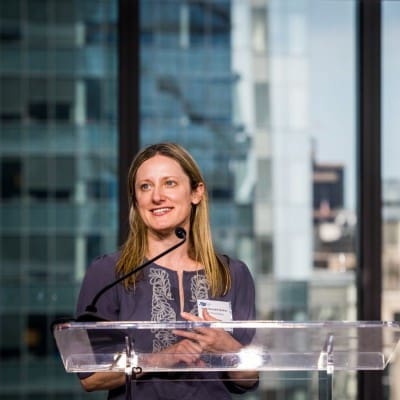
As President of PIDC, Philadelphia’s public-private economic development corporation, Anne Nevins has been instrumental in driving inclusive economic growth across the city. Under her leadership, PIDC has invested in diverse businesses and community projects, fostering job creation and neighborhood revitalization. Nevins has overseen major initiatives, including the development of the Navy Yard and the Lower Schuylkill Biotech Campus. Her commitment to equity and inclusion has expanded opportunities for small, Black, and brown-owned businesses. Nevins’s strategic vision and collaborative approach have significantly contributed to Philadelphia’s economic development and resilience.
Erica Atwood – City’s Office of Policy and Strategic Initiatives director

As Director of the City of Philadelphia’s Office of Policy and Strategic Initiatives for Criminal Justice & Public Safety, Erica Atwood leads efforts to advance public safety and criminal justice reform. With a focus on community engagement and equity, Atwood has implemented strategies to reduce violence and improve police-community relations. Her work includes overseeing initiatives that address systemic issues and promote restorative justice. Atwood’s contributions to the nonprofit sector are reflected in her advocacy for marginalized communities and her commitment to creating safer, more just environments. Her leadership has been pivotal in shaping policies that foster positive social change in Philadelphia.
Loree Jones – Philabundance CEO, hunger relief advocate

As CEO of Philabundance, Loree Jones leads one of the Delaware Valley’s largest hunger relief organizations. With a background in nonprofit leadership and city government, Jones has strengthened Philabundance’s role in addressing food insecurity. Under her guidance, the organization distributes millions of pounds of food annually through a network of 350 partners. Jones has expanded Philabundance’s impact by fostering partnerships with hospitals, schools, and libraries. Her leadership during the COVID-19 pandemic has been crucial in meeting increased demand for food assistance. Jones’s commitment to innovation and collaboration has enhanced Philabundance’s ability to serve vulnerable populations across southeastern Pennsylvania and New Jersey.
Donna Frisby-Greenwood – Fund for the School District of Philadelphia CEO

As former CEO of the Fund for the School District of Philadelphia, Donna Frisby-Greenwood has been a transformative leader in education philanthropy. Her career spans roles in youth development, voter engagement, and urban education. At the Fund, she modernized operations and significantly increased resources for Philadelphia’s public schools. Frisby-Greenwood’s innovative approach to partnerships and fundraising has brought millions of dollars to support educational initiatives. Her work has focused on closing opportunity gaps and enhancing college and career readiness programs. Currently serving as Senior Vice President at The Pew Charitable Trusts, she continues to shape philanthropic strategies that impact education and community development.
Joanna Otero-Cruz – Concilio president & CEO, Latino advocate

As Executive Director and President of Women Against Abuse, Joanna Otero-Cruz is a prominent advocate for domestic violence survivors and the Latino community. Her career includes leadership roles at Concilio and the City of Philadelphia, where she oversaw crucial community service programs. Otero-Cruz has been instrumental in expanding services for immigrant communities and enhancing civic engagement initiatives. Her work has focused on bridging gaps between government services and underserved populations. At Women Against Abuse, she leads efforts to provide comprehensive support for survivors, including emergency housing, legal services, and education programs. Otero-Cruz’s leadership has strengthened the organization’s capacity to address domestic violence in Philadelphia.
Roz McPherson – Urban League of Philadelphia president & CEO

As former President and CEO of the Urban League of Philadelphia, Roz McPherson has been a influential figure in community development and cultural leadership. Her diverse career spans museum administration, educational publishing, and nonprofit management. McPherson’s leadership at the Urban League focused on empowering African Americans through education, employment, and entrepreneurship programs. She has been a strong advocate for cross-cultural relationships and strategic partnerships. Currently leading The Roz Group, McPherson continues to contribute to the nonprofit sector through consulting services that leverage her expertise in marketing, strategic planning, and community engagement. Her work has consistently aimed at fostering diversity and inclusion in various sectors.
Diane Cornman-Levy – WOMEN’S WAY CEO, gender equity champion

As CEO of WOMEN’S WAY, Diane Cornman-Levy is a champion for gender equity and women’s empowerment. Her leadership has focused on addressing systemic barriers facing women and girls, particularly in areas of economic security, safety, and health. Cornman-Levy has expanded WOMEN’S WAY’s impact through innovative grantmaking strategies and advocacy initiatives. Her approach emphasizes collaboration and community-driven solutions. Despite personal challenges, she has remained committed to social justice, using her experiences to inform her work. Cornman-Levy’s contributions to the nonprofit sector include fostering partnerships, amplifying women’s voices, and promoting inclusive policies that advance gender equity across the Philadelphia region.
Tiffany Tavarez – Wells Fargo Foundation VP, community leader

As Vice President of Community Relations at Wells Fargo, Tiffany Tavarez is a prominent community leader with 15 years of experience in the field. Her work focuses on strategic philanthropy and community engagement, particularly in underserved areas. Tavarez has been instrumental in directing Wells Fargo’s community investments, fostering partnerships with local nonprofits, and championing initiatives that promote economic empowerment and social equity. Her leadership extends beyond her corporate role, as she serves on various nonprofit boards and actively mentors emerging leaders. Tavarez’s contributions to the nonprofit sector include bridging corporate resources with community needs and advocating for inclusive, impactful philanthropy.
Omar Woodard – Results for America VP, policy expert

As a Vice President at Results for America, Omar Woodard brings extensive expertise in policy, philanthropy, and impact investing to the nonprofit sector. With 18 years of experience, including roles at GreenLight Fund and Venture Philanthropy Partners, Woodard has been instrumental in driving data-driven, evidence-based approaches to social challenges. His work focuses on improving government performance and expanding economic opportunity in underserved communities. Woodard’s contributions extend to academia, where he lectures at the University of Pennsylvania and previously taught at Temple University. His leadership in various nonprofit and policy organizations has significantly advanced strategic philanthropy and innovative solutions to social issues.
Yannick Nézet-Séguin – Philadelphia Orchestra music director

As Music Director of the Philadelphia Orchestra, Yannick Nézet-Séguin has made significant contributions to the arts and nonprofit sector. His innovative programming and community engagement initiatives have revitalized the orchestra’s role in Philadelphia’s cultural landscape. Nézet-Séguin has championed educational outreach programs, bringing classical music to diverse audiences and nurturing young talent. His leadership has strengthened the orchestra’s financial position through increased fundraising and expanded partnerships. Beyond Philadelphia, his work with the Metropolitan Opera and Orchestre Métropolitain in Montreal has elevated the profile of classical music globally, inspiring philanthropic support for the arts.
Ashley Jordan – African American Museum in Philadelphia CEO

As President and CEO of the African American Museum in Philadelphia, Ashley Jordan leads one of the nation’s premier institutions dedicated to preserving and interpreting African American history and culture. With a Ph.D. and extensive experience in museum leadership, Jordan has strengthened the museum’s educational programs, community partnerships, and cultural initiatives. Her work focuses on expanding the museum’s reach, enhancing visitor experiences, and addressing contemporary social issues through the lens of African American history. Jordan’s leadership contributes significantly to the nonprofit sector by promoting cultural understanding, fostering dialogue on race and identity, and preserving vital aspects of American heritage.
John Fry – Drexel University president, civic leader

As President of Drexel University, John Fry has made substantial contributions to higher education and urban development in Philadelphia. His leadership has transformed Drexel into a major force for economic development and community revitalization. Fry has championed innovative public-private partnerships, including the $3.5 billion Schuylkill Yards project and the expansion of uCity Square. His initiatives have strengthened Drexel’s academic programs, research capabilities, and community engagement efforts. Fry’s civic leadership extends beyond the university, including service as chairman of the Chamber of Commerce for Greater Philadelphia. His work exemplifies the role of higher education institutions in driving social and economic progress in urban communities.
Amy Gutmann – University of Pennsylvania president emerita

As President of the University of Pennsylvania from 2004 to 2022, Amy Gutmann transformed the institution through her Penn Compact vision of inclusion, innovation, and impact. She significantly increased student diversity and financial aid, recruited eminent faculty, and expanded Penn’s global engagement. Gutmann championed interdisciplinary research and spearheaded major campus development projects. Under her leadership, Penn’s endowment grew from $4 billion to over $20 billion. She raised over $10 billion in philanthropic support, including the largest gift in Penn’s history. Gutmann’s tenure saw Penn rise in academic rankings and research funding. Her advocacy for accessible education and community engagement has had a lasting impact on higher education.
Madeline Bell – Children’s Hospital of Philadelphia CEO

As President and CEO of Children’s Hospital of Philadelphia (CHOP) since 2015, Madeline Bell has led one of the nation’s top pediatric hospitals to new heights. Under her leadership, CHOP has expanded its reach through new facilities and partnerships, enhanced its research capabilities, and improved patient care. Bell has championed initiatives in pediatric health equity, mental health, and innovative treatments. She has been instrumental in fundraising efforts, securing major gifts to support CHOP’s mission. Bell’s focus on operational excellence and strategic growth has strengthened CHOP’s position as a leader in pediatric healthcare, benefiting countless children and families.
Daniel J. Hilferty – Independence Health Group CEO emeritus
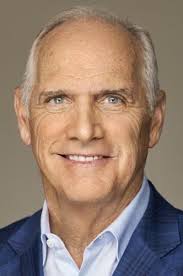
As CEO of Independence Health Group from 2010 to 2020, Daniel J. Hilferty transformed the company into one of the nation’s leading health insurers. He expanded operations across 27 states, serving 8 million members and growing revenue to $27 billion. Hilferty championed innovative healthcare delivery models and strategic partnerships to improve patient outcomes and reduce costs. He was a key voice in national healthcare policy discussions and led initiatives to address the opioid crisis. Hilferty’s civic leadership in Philadelphia included chairing the Chamber of Commerce and spearheading efforts to host major events like the 2015 Papal Visit and 2016 Democratic National Convention.
Stephen K. Klasko – Jefferson Health CEO emeritus
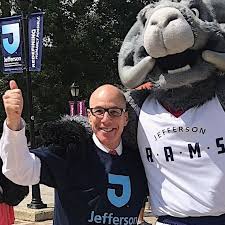
As President of Thomas Jefferson University and CEO of Jefferson Health from 2013 to 2021, Stephen K. Klasko led a dramatic transformation and expansion of the organization. He oversaw the merger of Thomas Jefferson University with Philadelphia University and grew Jefferson Health from three hospitals to 18. Klasko championed innovation in healthcare delivery and medical education, emphasizing technology integration and creative problem-solving. He launched initiatives in telehealth, design thinking, and entrepreneurship. Under his leadership, Jefferson’s annual revenue grew from $1.8 billion to over $6 billion. Klasko’s vision for “healthcare at any address” and focus on health equity have influenced the broader healthcare landscape.
Richard M. Englert – Temple University president emeritus

As President of Temple University from 2016 to 2021, Richard M. Englert capped a nearly 50-year career at the institution. He guided Temple through challenges including the COVID-19 pandemic, maintaining the university’s commitment to accessibility and academic excellence. Englert oversaw significant campus development projects and strengthened Temple’s community engagement initiatives. He championed diversity and inclusion efforts, expanded research capabilities, and enhanced Temple’s national reputation. Englert’s leadership style emphasized collaboration and transparency. His deep institutional knowledge and dedication to Temple’s mission of providing high-quality, affordable education to a diverse student body left a lasting impact on the university and Philadelphia community.
Joseph A. Frick – Independence Blue Cross CEO emeritus

As CEO emeritus of Independence Blue Cross, Joseph A. Frick made significant contributions to healthcare and community development. During his tenure, he enhanced IBC’s standing as a corporate leader in Philadelphia. Frick’s leadership extended beyond healthcare, serving on boards of publicly-traded companies and nonprofits. As Senior Advisor at Diversified Search Group, he continues to impact the nonprofit sector by advising CEOs and conducting executive searches. His involvement in business strategy and expansion initiatives demonstrates his commitment to organizational growth and leadership development. Frick’s career exemplifies the intersection of corporate leadership and community engagement in the nonprofit world.
Ira Lubert – Independence Health Group board chair

As board chair of Independence Health Group and co-founder of Independence Capital Partners, Ira Lubert has significantly influenced both the business and nonprofit sectors. His leadership at Penn State University’s Board of Trustees, including serving as Chairman, demonstrates his commitment to higher education. Lubert’s philanthropic efforts, evidenced by his involvement in fundraising campaigns and advisory boards, have strengthened educational institutions and community organizations. His expertise in investment management and real estate has been leveraged to support various nonprofit initiatives, showcasing how business acumen can be applied to advance charitable causes and institutional development.
David L. Cohen – Comcast senior advisor, civic leader

As Senior Advisor at Comcast Corporation, David L. Cohen has been a prominent civic leader and advocate for corporate social responsibility. His work has significantly impacted the nonprofit sector through initiatives in diversity, education, and community investment. Cohen has received numerous awards for his civic and charitable contributions, reflecting his commitment to social causes. His leadership roles in various community organizations and involvement in major civic events have strengthened Philadelphia’s nonprofit landscape. Cohen’s career exemplifies how corporate leadership can be leveraged to drive positive social change and support nonprofit initiatives on a large scale.
Leslie Anne Miller – Mount Sinai Health System trustee

As a trustee of Mount Sinai Health System and former board chair of the Philadelphia Museum of Art, Leslie Anne Miller has made substantial contributions to healthcare, arts, and culture. Her leadership roles in prestigious institutions, including chairing the Philadelphia Flower Show, demonstrate her commitment to community engagement and cultural preservation. Miller’s involvement in various nonprofit boards has strengthened governance and strategic direction in multiple sectors. Her dedication to civic causes and ability to lead major cultural institutions highlight the importance of skilled leadership in enhancing the impact and sustainability of nonprofit organizations.
Charisse R. Lillie – CRL Consulting president, diversity expert

As president of CRL Consulting and former executive at Comcast Corporation, Charisse R. Lillie has been a trailblazer in diversity, corporate social responsibility, and governance. Her leadership of the Comcast Foundation and involvement in community investment initiatives have significantly impacted the nonprofit sector. Lillie’s expertise in human resources and diversity has helped shape inclusive practices in both corporate and nonprofit environments. Her commitment to social justice and mentorship has opened doors for many, particularly women and minorities, in law and business. Lillie’s career demonstrates how corporate experience can be leveraged to advance diversity and inclusion in the nonprofit world.
Shelly Lotman-Fisher – Legacy Youth Tennis founder

As founder of Legacy Youth Tennis and Education, Shelly Lotman-Fisher has made significant contributions to youth development through sports. She also founded the Herb It Forward Foundation, providing scholarships and mentorship to underprivileged students. Lotman-Fisher’s entrepreneurial spirit extends to her role as CEO of Hope Paige Designs, a medical ID jewelry company. Her work exemplifies how business acumen can be applied to social causes. Through the HERB it Forward Scholarship, she has helped over 200 students pursue higher education. Lotman-Fisher’s multifaceted approach to philanthropy demonstrates the power of combining entrepreneurship with social impact to create lasting change in young people’s lives.
Marsha R. Perelman – The Franklin Institute board chair

As board chair of The Franklin Institute, Marsha R. Perelman has been instrumental in advancing science education and cultural enrichment in Philadelphia. Her leadership during the “Inspire Science” campaign helped raise significant funds for new exhibits and facility improvements. Perelman’s commitment to animal welfare is evident in her roles as chair of the ASPCA and co-chair of ACCT Philly. She has also served on the boards of the Philadelphia Zoo and the University of Pennsylvania’s School of Veterinary Medicine. Perelman’s diverse board experience and philanthropic efforts showcase how strategic leadership can drive innovation and impact across multiple nonprofit sectors.
Patricia D. Wellenbach – Please Touch Museum president & CEO

As President and CEO of Please Touch Museum, Patricia D. Wellenbach has transformed the institution into a leading children’s museum. She led the museum’s recovery from bankruptcy, implemented a strategic plan to reimagine play-based learning, and navigated the challenges of the COVID-19 pandemic. Under her leadership, the museum has raised over $32 million in philanthropic support and achieved reaccreditation from the American Alliance of Museums. Wellenbach’s work has expanded the museum’s community impact, with 30% of visitors attending for free or reduced admission. Her leadership exemplifies how innovative management can revitalize cultural institutions and enhance their educational impact.
Lorina Marshall-Blake – Independence Blue Cross Foundation president

As President of the Independence Blue Cross Foundation and Vice President of Community Affairs at Independence Blue Cross, Lorina Marshall-Blake has been a driving force in addressing health disparities and community needs. She leads strategic efforts to improve health and wellness in southeastern Pennsylvania, focusing on innovative healthcare solutions and community partnerships. Marshall-Blake’s involvement in over 30 professional and civic organizations, including roles with the Urban Affairs Coalition and United Negro College Fund, demonstrates her commitment to comprehensive community development. Her leadership has strengthened the foundation’s role as a collaborator and thought leader in addressing emerging health needs and fostering sustainable community solutions.
Pedro A. R. – President and CEO, Philadelphia Foundation

As President and CEO of the Philadelphia Foundation, Pedro A. Ramos leads one of the oldest and largest community foundations in the U.S. Under his leadership, the foundation has significantly increased its assets and impact, launching major initiatives like the Lenfest Institute for Journalism and the PHL COVID-19 Fund. Ramos has strengthened the foundation’s role as a convener and catalyst for positive change in the Greater Philadelphia region. His strategic vision has expanded the foundation’s impact across education, economic development, and civic engagement. Ramos’s background in law, government, and education brings valuable cross-sector expertise to his philanthropic leadership, enhancing the foundation’s ability to address complex community challenges.
Romona Riscoe Benson – PECO director of corporate relations

As Director of Corporate and Community Impact at PECO, Romona Riscoe Benson leads efforts in corporate social responsibility, managing an $11 million annual budget. Her work includes workforce development, vulnerable customer assistance, and corporate grant-making. Previously, as President and CEO of the African American Museum in Philadelphia, she stabilized the organization, increased visitation, and attracted significant donor support. Benson’s extensive experience in nonprofit management, arts, and community engagement has made her a key figure in fostering corporate-community partnerships and enhancing the impact of social initiatives in the Greater Philadelphia area.
Varsovia Fernandez – PA CDFI Network executive director

As Executive Director of the PA CDFI Network, Varsovia Fernandez leads a coalition of 17 community development financial institutions focused on providing financing options for small businesses, particularly in underserved communities. With over 25 years of experience in executive roles and nonprofit management, Fernandez has been instrumental in driving economic development and financial inclusion. Her leadership has strengthened the network’s capacity to support small businesses, especially during the COVID-19 recovery. Fernandez’s commitment to community development is reflected in her service on various boards and her recognition with numerous awards for her contributions to the nonprofit sector.
These influencers exemplify the strength and dedication within Philadelphia’s nonprofit sector, each contributing uniquely to their communities. Their leadership and innovative approaches set a benchmark for excellence and inspire others in the sector to strive for greater impact.
We invite you to engage with Nonprofits.Club to learn more about our initiatives and support our mission. If you know of other influential leaders making a difference in the Philadelphia Metro Area, please reach out and suggest additional names for future lists. Together, we can continue to recognize and amplify the efforts of those who work tirelessly to improve our communities.
Call to Action
Join Nonprofits.Club in celebrating these remarkable leaders and their contributions. Visit our website to learn more about our programs, events, and how you can get involved. We also encourage you to suggest other nonprofit influencers who should be recognized for their impactful work. Let’s continue to support and uplift those who are dedicated to making a positive difference in our world.









































































































































































































































































































































































































































































































































